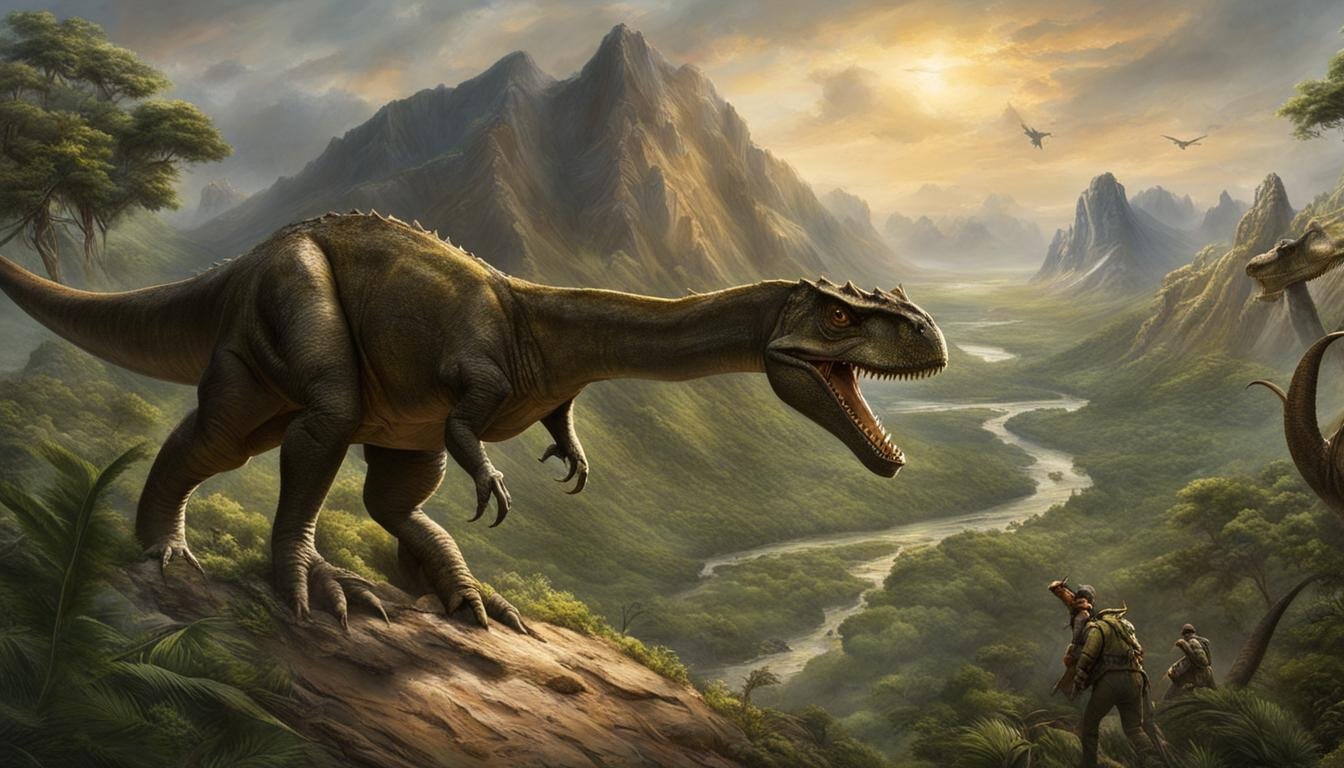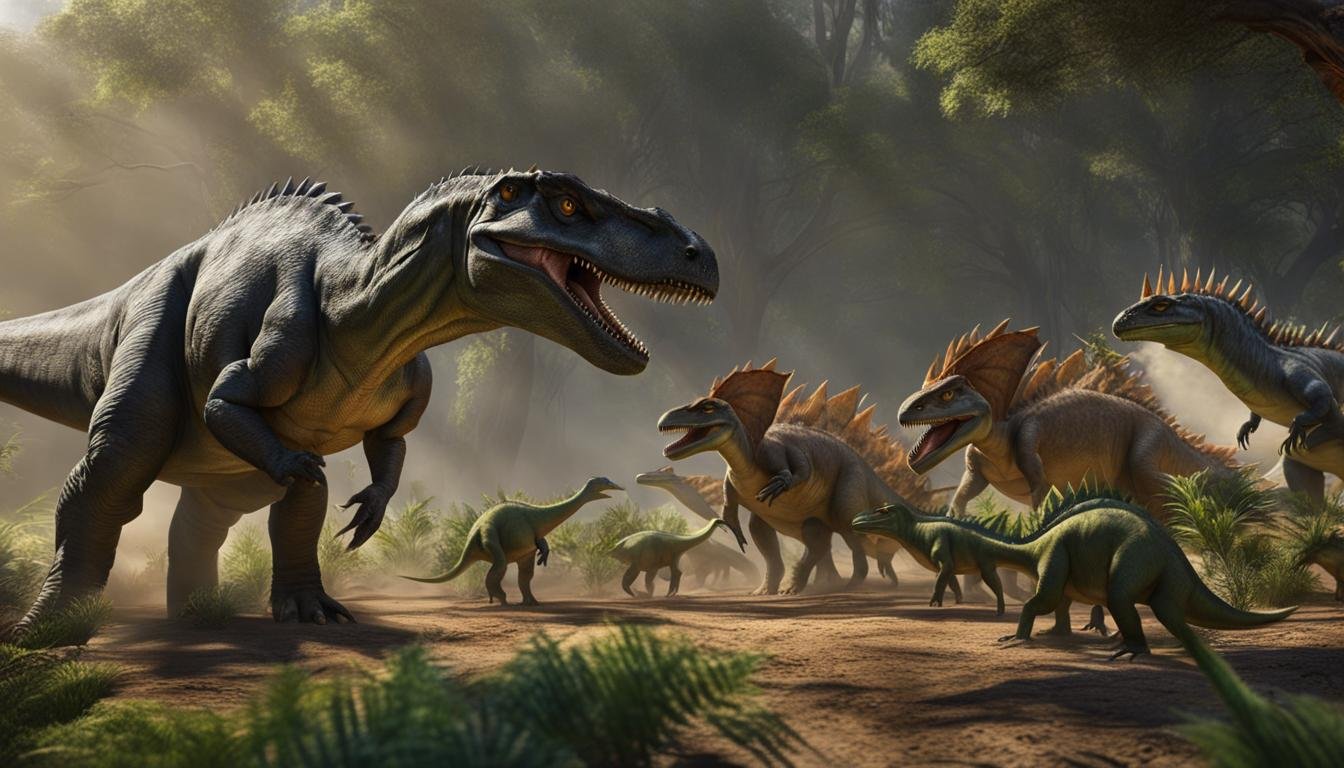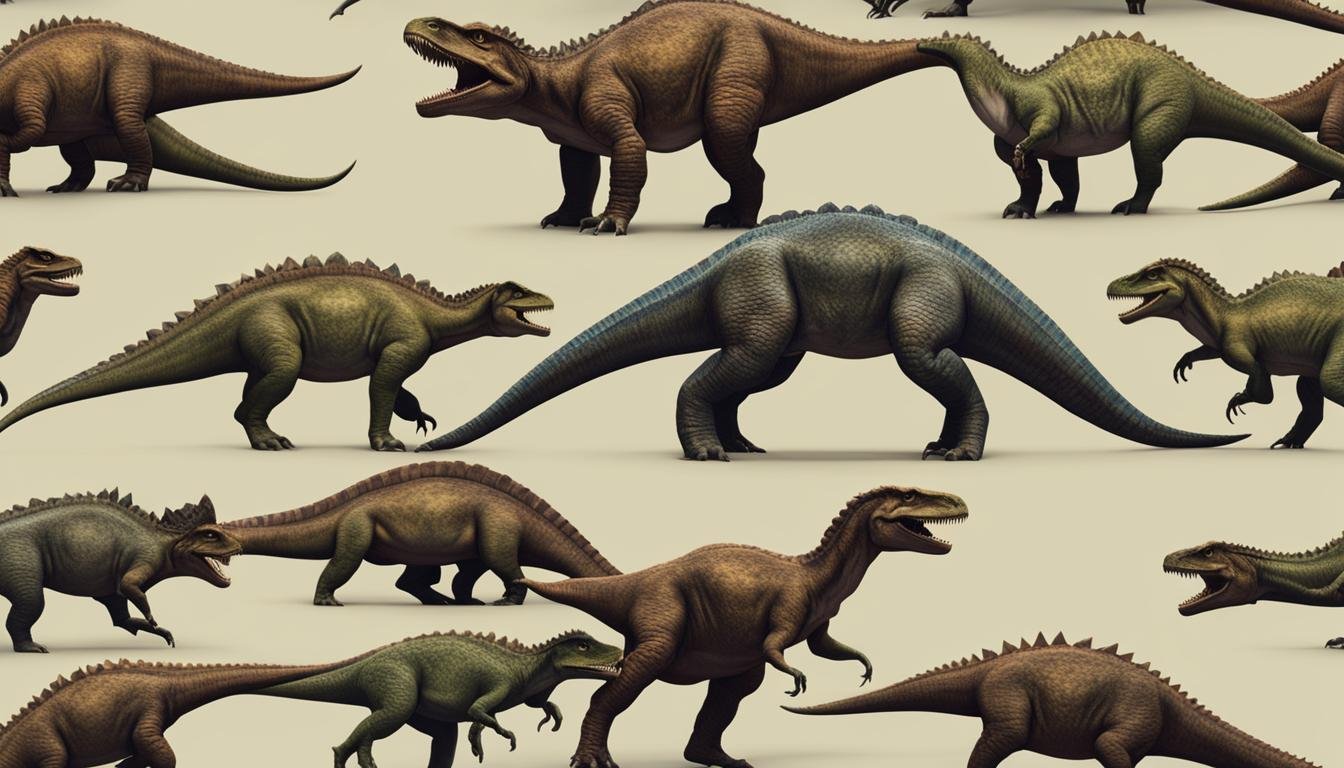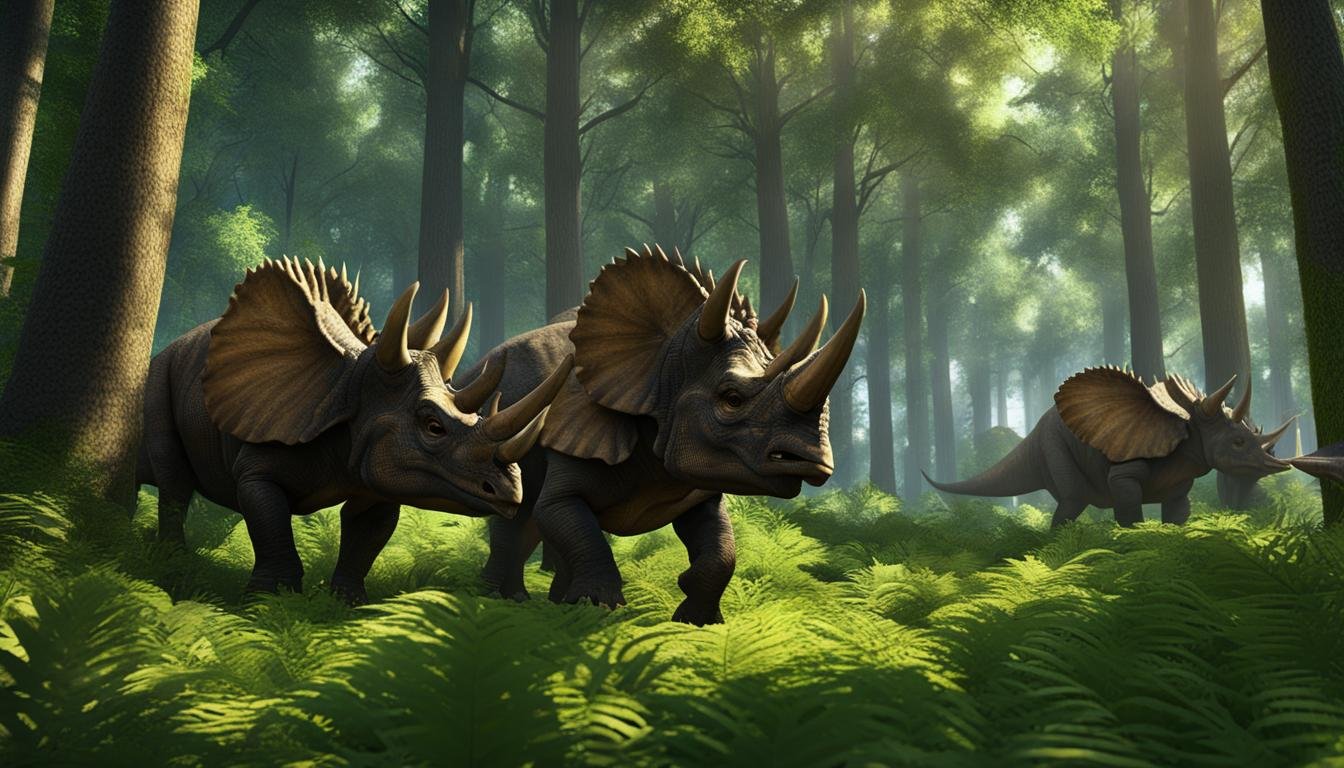Welcome to our exploration of dinosaur pathfinding and territorial behavior, where we unravel the mysteries of these incredible prehistoric animals. From their hunting strategies to their impressive navigation skills, dinosaurs never cease to amaze us. Join us on this journey as we dive into the complex behavior patterns exhibited by these ancient creatures.
| Key Takeaways | Description |
|---|---|
| Dinosaur Pathfinding | Insights into prehistoric animals’ behavior and adaptation are gleaned from studying dinosaur pathfinding and territorial behavior. |
| Hunting Strategies | Dinosaurs’ survival heavily depended on their hunting strategies, ranging from pack hunting to sophisticated ambush tactics. |
| Territorial Behavior | This behavior involved marking and defending territories, which was essential for showcasing dominance and securing resources. |
| Communication | Visual displays were a key form of communication among dinosaurs, used for establishing dominance and attracting mates. |
| Evolutionary Significance | Effective pathfinding and territorial behaviors were crucial factors in the evolution and success of dinosaurs as a group. |
The Importance of Pathfinding in Dinosaur Behavior
Dinosaur pathfinding played a significant role in their behavior and survival. These prehistoric creatures needed to navigate their surroundings effectively in order to locate food sources, avoid obstacles, and establish territories. The ability to find the most efficient routes was crucial for their survival and success in diverse environments.
Natural selection played a pivotal role in shaping the movement patterns of dinosaurs. Individuals with better pathfinding skills had a higher chance of survival, as they could more effectively find food and avoid potential dangers. Over time, this led to the evolution of sophisticated navigation abilities in various dinosaur species.
Understanding dinosaur movement patterns provides valuable insights into their behavior and adaptation. By studying their pathfinding strategies, researchers can gain a better understanding of how these creatures moved through different landscapes, adapted to changing environments, and interacted with their surroundings. This knowledge helps us piece together the complex behaviors of dinosaurs and sheds light on their remarkable ability to thrive in various ecosystems.
Dinosaur Pathfinding: A Complex Adaptation
“The ability to navigate their surroundings efficiently allowed dinosaurs to locate food sources, avoid obstacles, and establish territories.”
Pathfinding in dinosaurs was not a straightforward process. It involved a combination of sensory input, cognitive abilities, and physical capabilities. Dinosaur pathfinding was influenced by various factors, including visual cues, olfactory receptors, and environmental landmarks. By integrating information from their surroundings, dinosaurs could effectively navigate and make informed decisions about their movement.
Dinosaur behavior was shaped by natural selection, which favored individuals with efficient pathfinding skills. Those who could find food sources more easily and establish territories in prime locations had a higher chance of survival and reproduction. Over time, these adaptive behaviors became ingrained in dinosaur populations, leading to the diverse movement patterns observed in different species.
Overall, the study of dinosaur pathfinding provides a fascinating glimpse into the behavior and adaptability of these ancient creatures. By understanding how dinosaurs moved and navigated their surroundings, we gain valuable insights into their survival strategies and the evolutionary processes that shaped their behavior.
| Dinosaur Species | Movement Pattern |
| Tyrannosaurus Rex | Predominantly terrestrial, relying on walking and running |
| Velociraptor | Swift and agile, capable of sudden changes in direction |
| Pterodactyl | Flies using wings, adapted for aerial movement |
| Ankylosaurus | Slow-moving, heavily armored, using tail for defense |
| Brachiosaurus | Large, long-necked dinosaur, adapted for browsing high vegetation |
Dinosaur Territorial Behavior and Dominance Hierarchy
Dinosaur territorial behavior was a significant aspect of their lives. These ancient creatures would establish territories to defend critical resources such as food and mates. Within these territories, a dominance hierarchy would form, with the most dominant individuals gaining access to the best resources. Dominance was often established through displays of aggression and territorial disputes.
In dinosaur territory mapping, boundaries were marked and defended to maintain control over the territory. This involved visual displays, such as posturing, roaring, and elaborate physical features like large crests or intimidating size. These displays effectively communicated dominance and deterred potential rivals from encroaching.
One example of dinosaur territorial behavior can be seen in the Ceratosaurus. Fossil evidence suggests that these carnivorous dinosaurs engaged in combat for the control of their territories. The dominance hierarchy would determine which individuals could access the most abundant hunting grounds and attract potential mates.
Dinosaur Territorial Behavior: A Visual Representation
| Dinosaur Species | Territory Size | Main Food Source |
|---|---|---|
| Tyrannosaurus rex | Approximately 100 square miles | Large herbivorous dinosaurs |
| Triceratops | Approximately 50 square miles | Vegetation |
| Stegosaurus | Approximately 30 square miles | Plant matter |
| Velociraptor | Approximately 10 square miles | Small prey and scavenging |
This table gives a glimpse into the territorial behavior of different dinosaur species. While these numbers are estimates based on available evidence, they demonstrate the varying sizes of dinosaur territories and their dependence on specific food sources.
Dinosaur Hunting Strategies
Dinosaurs employed a range of hunting strategies to secure their meals. One notable hunting technique exhibited by certain species was pack hunting. In pack hunting, dinosaurs would work together in coordinated groups to bring down larger prey. This strategy allowed them to overcome the challenges of hunting larger and more formidable opponents, increasing their chances of a successful kill.
Other dinosaurs relied on their individual attributes, such as speed, agility, and stealth, to ambush their unsuspecting targets. These dinosaurs would patiently stalk their prey, carefully timing their attack to ensure they had the element of surprise. By leveraging their unique physical characteristics, these dinosaurs were able to outmaneuver and overpower their prey, securing a successful hunt.
“Pack hunting in dinosaurs was a remarkable adaptation that enabled them to tackle larger and more formidable prey,” says Dr. Laura Parker, a paleontologist specializing in dinosaur behavior. “Working together in groups allowed them to coordinate their movements and take advantage of their combined strength and hunting strategies.”
Dinosaur Hunting Strategies: A Comparison
When comparing pack hunting to individual hunting strategies, several key differences emerge. Pack hunting relied on cooperative behavior, with each member of the group playing a specific role in the hunt. This collaborative effort allowed them to take down prey that would have been impossible for an individual dinosaur to tackle.
| Dinosaur Hunting Strategies | Advantages | Disadvantages |
|---|---|---|
| Pack Hunting |
|
|
| Individual Hunting |
|
|
Understanding the diverse hunting strategies employed by dinosaurs provides valuable insights into their social dynamics and survival strategies. It showcases the adaptability and resourcefulness of these prehistoric creatures, and the various ways in which they thrived in different environments.
The Role of Communication in Dinosaur Territorial Behavior
Dinosaurs, being social creatures, relied heavily on communication to establish and defend their territories. Through various visual displays, they conveyed dominance, defended their turf, and attracted potential mates. These communication methods played a crucial role in shaping dinosaur territorial behavior and social dynamics.
One prominent form of communication in territorial disputes among dinosaurs was through visual displays. Many dinosaur species possessed elaborate and distinctive features such as colorful crests, horns, frills, or impressive size. These physical attributes were used to intimidate and establish dominance over rivals. For example, the magnificent frilled dinosaur, Triceratops, used its impressive frill to ward off potential adversaries and communicate its territorial boundaries.
Additionally, dinosaurs also employed body postures, such as erecting their spines, to signal dominance or submission. By positioning themselves in a certain way, dinosaurs were able to convey their intentions and assert their territorial claims. These visual displays and body language helped minimize physical confrontations and potential injuries.
Furthermore, communication in territorial disputes extended beyond visual displays. Many dinosaurs emitted a variety of vocalizations to assert dominance or attract potential mates. For example, the large and ferocious Tyrannosaurus rex is believed to have produced deep roars to intimidate rivals and establish its dominance over its territory. Such vocalizations were essential for dinosaurs to communicate their presence, intentions, and territorial boundaries.
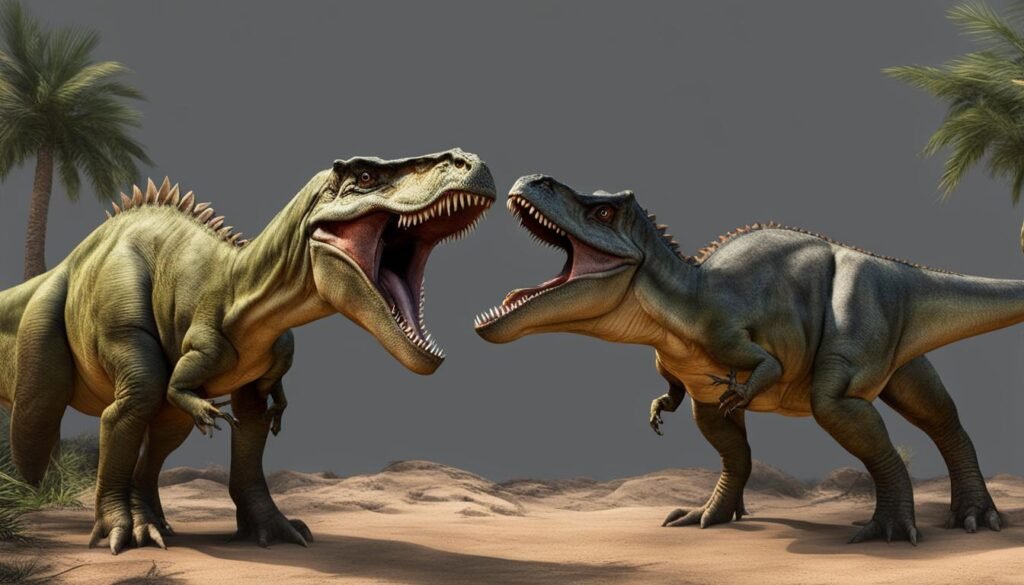
Dinosaur Communication Methods
| Dinosaur Species | Communication Method |
|---|---|
| Triceratops | Displaying impressive frills |
| Tyrannosaurus rex | Producing deep roars |
| Parasaurolophus | Using their crests to produce sound |
| Stegosaurus | Raising and lowering their plates |
Understanding the role of communication in dinosaur territorial behavior provides valuable insights into their social dynamics and survival strategies. It allows us to envision how these ancient creatures interacted with their environment, established dominance, and communicated their intentions. By studying the communication methods employed by dinosaurs, we can better appreciate the complexity and richness of their prehistoric world.
The Evolutionary Significance of Pathfinding and Territorial Behavior in Dinosaurs
Pathfinding and territorial behavior played crucial roles in the evolution of dinosaurs, shaping their behavior and adaptation over millions of years. These behaviors were essential for the survival and success of dinosaurs as a group, allowing them to thrive in diverse environments and secure vital resources.
The Adaptation of Dinosaur Behavior
Dinosaurs adapted their behavior in response to changes in their environment and competition for resources. Effective pathfinding skills enabled dinosaurs to locate food sources, avoid obstacles, and establish territories. Natural selection favored individuals that demonstrated effective pathfinding, leading to the evolution of more sophisticated navigation abilities.
Effective pathfinding allowed dinosaurs to flourish in diverse environments, adapt to changing landscapes, and locate resources.
Territorial Behavior in Dinosaur Evolution
Territorial behavior was another important aspect of dinosaur evolution. Dinosaurs established territories to defend valuable resources, such as food and mates. Within these territories, a dominance hierarchy formed, with the most dominant individuals gaining access to the best resources. This territorial behavior ensured the survival of the fittest, as dominant individuals secured essential resources for themselves and their offspring.
Territorial behavior played a crucial role in the evolution and success of dinosaurs as a group.
The Significance of Pathfinding and Territorial Behavior
The evolutionary significance of pathfinding and territorial behavior cannot be overstated. These adaptive behaviors allowed dinosaurs to navigate their surroundings, establish territories, and secure resources, contributing to their survival and dominance during the Mesozoic Era. Understanding these behaviors provides valuable insights into the social dynamics, hunting strategies, and survival mechanisms of dinosaurs.
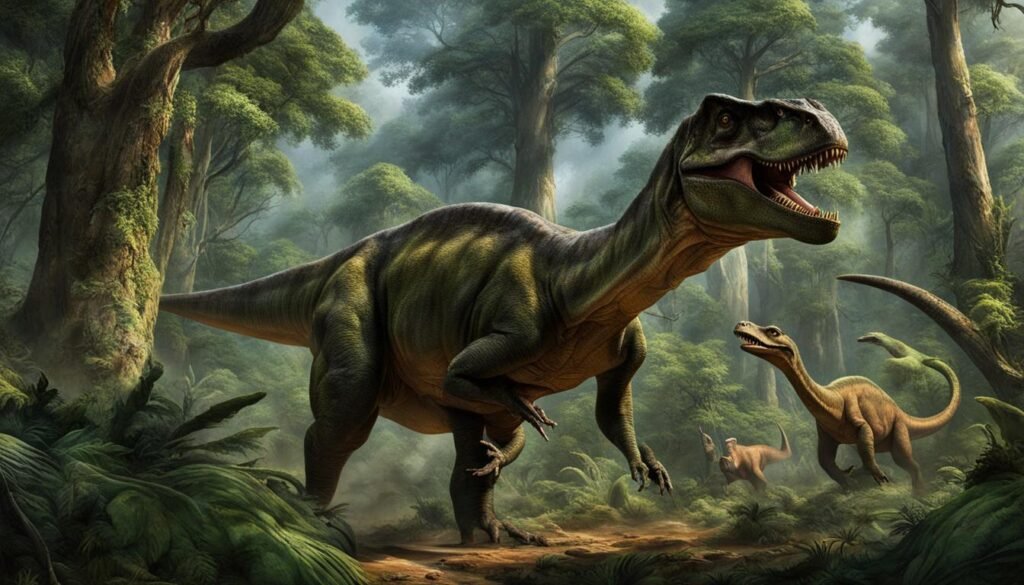
| Pathfinding | Territorial Behavior |
|---|---|
| Efficient navigation | Defense of resources |
| Adaptation to changing landscapes | Establishment of dominance hierarchy |
| Natural selection for effective pathfinders | Survival of the fittest |
| Flourishing in diverse environments | Securing essential resources |
Conclusion
In conclusion, the study of dinosaur pathfinding and territorial behavior offers fascinating insights into the behavior and adaptation of these prehistoric creatures. By unraveling how dinosaurs moved, navigated, and established territories, we can gain a deeper understanding of their social dynamics, hunting strategies, and survival mechanisms.
Pathfinding played a crucial role in dinosaur behavior, allowing them to efficiently explore and exploit their surroundings. Natural selection favored individuals with effective pathfinding skills, enabling dinosaurs to thrive in diverse environments and find essential resources.
Territorial behavior was a common aspect of dinosaur life, with individuals establishing boundaries to defend precious resources. Within these territories, dominance hierarchies formed, ensuring that the most dominant dinosaurs had access to the best food and mating opportunities.
Overall, the complex behaviors of dinosaurs were shaped by natural selection and continue to captivate researchers and enthusiasts alike. Understanding how dinosaurs moved, navigated, and established territories provides us with valuable insights into their incredible adaptation and survival strategies.

